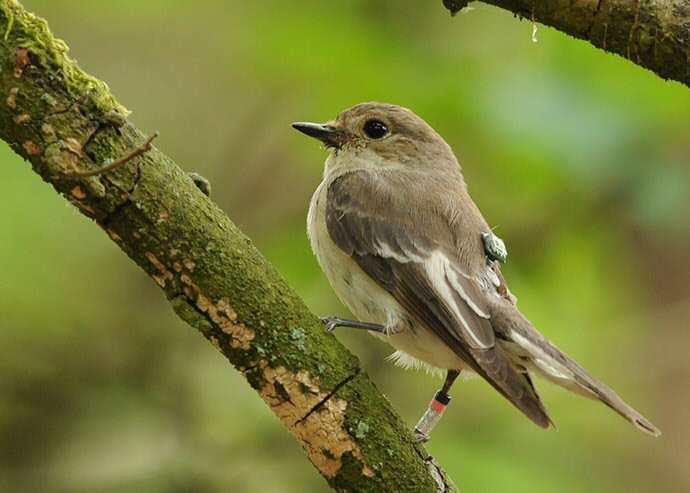Alternate non-stop migration strategies of pied flycatchers to cross the Sahara desert

Each year more than two billion songbirds cross the Sahara, but how they perform this formidable task is largely unknown. Using geolocation tracks from 27 pied flycatchers, a nocturnally migrating passerine, Janne Ouwehand and Christiaan Both show that most birds made diurnal flights in both autumn and spring. These diurnal flights were estimated to be part of non-stop flights of mostly 40–60 h. In spring, birds flew across the Sahara, while autumn migration probably circumpassed part of the desert, through a long oversea flight. Their data contradict claims that passerines cross the Sahara by intermittent flight and daytime resting. The frequent occurrence of long non-stop flights to cross the desert shows migrants' physiological abilities and poses the question why this would not be the general migration strategy to cross the Sahara.
More information
- Full publication in Biology Letters
- Contact: PhD Janne Ouwehand, Conservation Ecology Group, or: prof. Christiaan Both, Conservation Ecology Group
| Last modified: | 13 October 2022 08.55 a.m. |
More news
-
03 April 2025
IMChip and MimeCure in top 10 of the national Academic Startup Competition
Prof. Tamalika Banerjee’s startup IMChip and Prof. Erik Frijlink and Dr. Luke van der Koog’s startup MimeCure have made it into the top 10 of the national Academic Startup Competition.
-
01 April 2025
NSC’s electoral reform plan may have unwanted consequences
The new voting system, proposed by minister Uitermark, could jeopardize the fundamental principle of proportional representation, says Davide Grossi, Professor of Collective Decision Making and Computation at the University of Groningen
-
01 April 2025
'Diversity leads to better science'
In addition to her biological research on ageing, Hannah Dugdale also studies disparities relating to diversity in science. Thanks to the latter, she is one of the two 2024 laureates of the Athena Award, an NWO prize for successful and inspiring...
